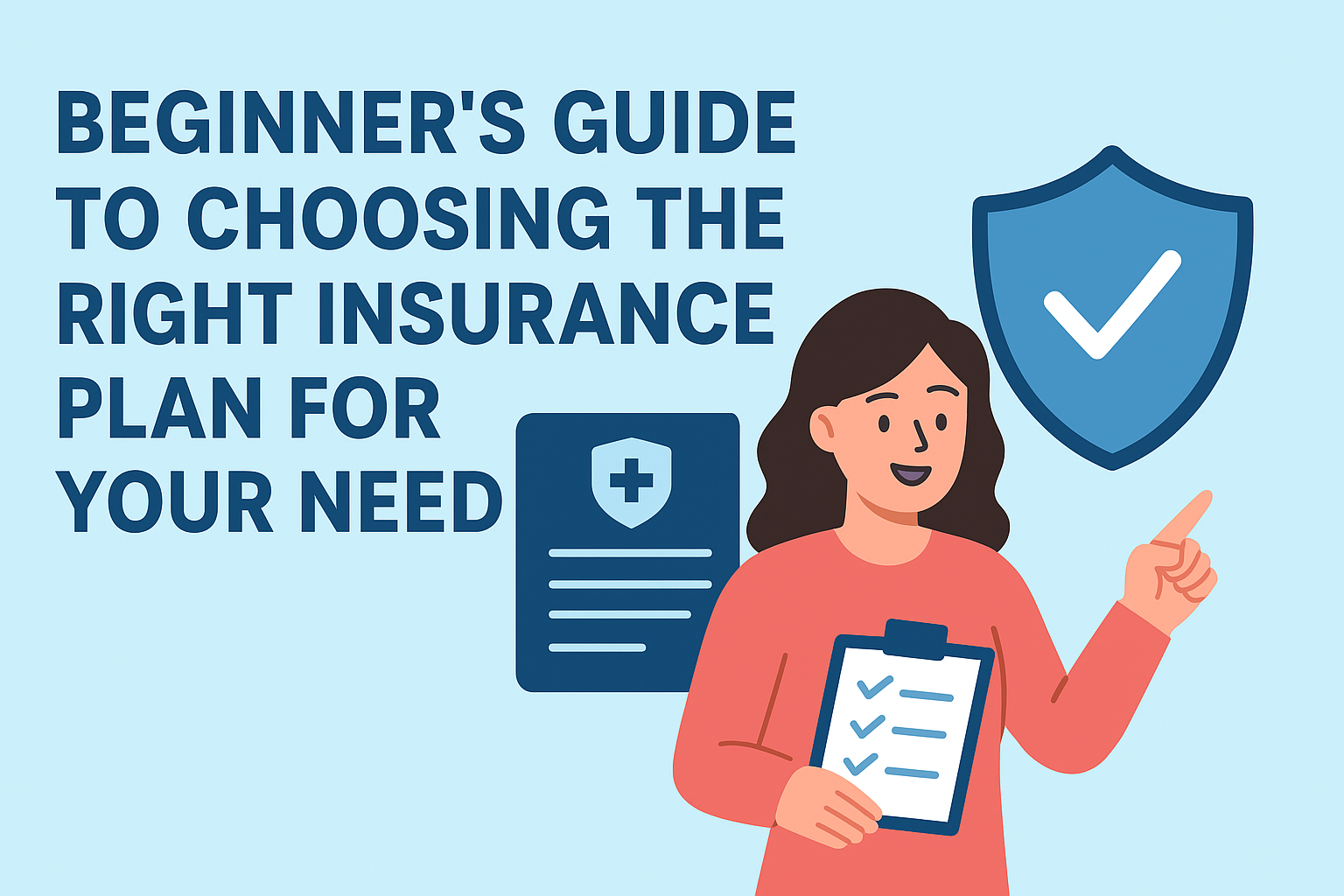
Beginner’s Guide to Choosing the Right Insurance Plan for Your Needs
Choosing the right insurance plan can feel overwhelming, especially for beginners. With so many providers, policies, and confusing terms, it’s easy to get lost. However, insurance is one of the most important financial tools for protecting yourself and your family. The right plan offers peace of mind, financial stability, and security during life’s unexpected events.
In this beginner’s guide, we’ll break down the essential steps to help you choose the best insurance plan for your needs in 2025. Whether you’re looking for health, life, auto, or home coverage, this guide will walk you through the process in a clear and simple way.
Why Insurance Matters
Insurance isn’t just about paying premiums—it’s about buying protection for the future. Imagine an unexpected accident, illness, or natural disaster. Without insurance, you’d have to cover all expenses out of pocket. With insurance, however, the financial burden is reduced or even eliminated.
The right insurance plan allows you to:
- Protect your health and income.
- Safeguard your family’s financial future.
- Secure your property and assets.
- Reduce stress during emergencies.
Now let’s explore how to identify the right coverage for your needs.
Step 1: Identify Your Needs
Before buying insurance, start by evaluating your personal situation. Everyone’s needs are different, and the “best” plan for one person might not be suitable for another.
Ask yourself:
- Do I need health coverage for myself or my entire family?
- Do I have dependents who would need financial support if something happened to me?
- Do I own a car, home, or business that needs protection?
- Am I concerned about cyber threats, travel risks, or pet healthcare?
Once you’re clear about your needs, you’ll find it easier to compare and select the right insurance plan.
Step 2: Learn About the Types of Insurance
Beginners should start by understanding the main types of insurance:
- Health Insurance – Covers hospital bills, doctor visits, and medical emergencies.
- Life Insurance – Provides financial support to your family if you pass away.
- Auto Insurance – Protects you against vehicle damages and accidents.
- Home/Property Insurance – Safeguards your house against fire, theft, and disasters.
- Travel Insurance – Covers unexpected expenses when traveling.
- Disability Insurance – Provides income replacement if you cannot work due to illness or injury.
- Business Insurance – Protects business owners from liabilities and losses.
Pro Tip: Start with essentials like health and life insurance before moving to specialized coverage.
Step 3: Understand Insurance Terminology
Insurance comes with a lot of jargon. To make an informed choice, you should understand key terms:
- Premium – The amount you pay monthly or annually for the policy.
- Deductible – The out-of-pocket cost you pay before insurance starts covering expenses.
- Co-payment (Co-pay) – A fixed fee you pay for certain services like doctor visits.
- Coverage Limit – The maximum amount your insurer will pay.
- Exclusions – Conditions or events not covered by your plan.
Knowing these terms will help you avoid confusion and hidden costs.
Step 4: Compare Different Insurance Plans
Don’t settle for the first plan you see. Instead, compare multiple providers and policies.
What to look for when comparing plans:
- Coverage benefits (what’s included and excluded).
- Premium costs and payment flexibility.
- Network hospitals, clinics, or service providers.
- Claim settlement ratio (how easily and quickly claims are processed).
- Customer service reputation.
Pro Tip: Use online comparison tools to save time and get side-by-side comparisons.
Step 5: Balance Cost and Coverage
One of the biggest mistakes beginners make is choosing the cheapest plan. While saving money is important, inadequate coverage can cost you more in the long run.
Example: A very low-cost health insurance policy might exclude critical illnesses or limit hospital options. If you face a serious illness, you’ll have to pay large bills yourself.
The goal is to balance affordability with sufficient coverage. Always prioritize protection over price alone.
Step 6: Consider Your Life Stage
Your insurance needs change as your life evolves.
- Young professionals: Focus on health and life insurance with affordable premiums.
- Married couples: Add spousal coverage, disability insurance, and property protection.
- Parents: Invest in family health insurance and term life insurance.
- Retirees: Focus on health, long-term care, and critical illness coverage.
Review your policies every few years to ensure they align with your current life stage.
Step 7: Check the Insurer’s Reputation
Choosing a trusted insurance company is just as important as choosing the right plan.
Check for:
- Claim settlement ratio – Higher ratios indicate a reliable provider.
- Customer reviews – Look for real experiences with claims and service.
- Regulatory approval – Ensure the insurer is licensed by relevant authorities.
A well-reputed insurer ensures you won’t struggle when it’s time to file a claim.
Step 8: Look for Additional Benefits
In 2025, many insurers offer extra perks beyond basic coverage. These include:
- Wellness programs (free checkups, fitness discounts, mental health support).
- Telemedicine access (online doctor consultations).
- Cashless claim services (direct hospital payments).
- Digital claim tracking apps for easy updates.
These value-added features can make your insurance plan more convenient and worthwhile.
Step 9: Avoid Common Mistakes
Beginners often fall into traps when selecting their first insurance plan. Avoid these mistakes:
- Choosing only the cheapest premium.
- Ignoring policy exclusions.
- Not reading the fine print.
- Buying too much coverage you don’t need.
- Failing to disclose pre-existing conditions.
Always take time to review your policy documents before signing.
Step 10: Seek Professional Advice
If you’re still unsure, consider speaking with an insurance advisor or financial planner. They can help assess your needs and recommend the most suitable policies.
However, be cautious—some advisors may push products for commission. Always ask for unbiased advice and do your own research before making decisions.
Final Thoughts
Choosing the right insurance plan may seem complicated at first, but by breaking it down into simple steps, it becomes much more manageable.
- Start by identifying your needs.
- Understand different types of insurance.
- Compare plans carefully and balance cost with coverage.
- Check the insurer’s reputation and read the fine print.
Remember, insurance is not an expense—it’s an investment in security and peace of mind. By making informed decisions today, you can protect yourself, your family, and your future tomorrow.

